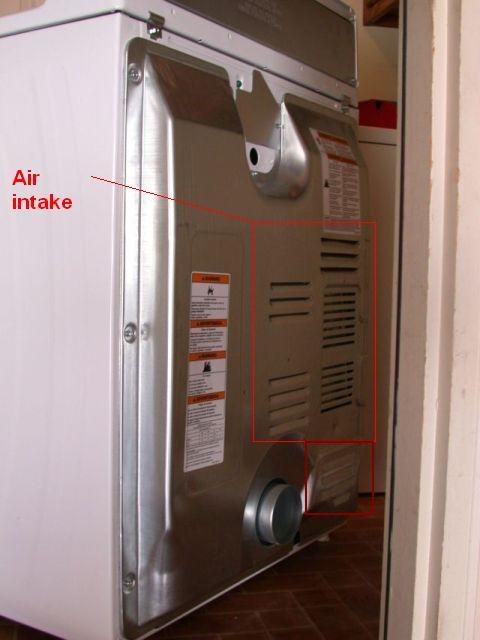
Normally, a clothes dryer sucks 3000 to 4000 Watts of power to heat air drawn from your house and dumps every bit of it out the vent! What a waste! The idea here is to remove the heat from the moist air and recycle it back into the dryer air intake. Air intake is through the slots located on the back. All the moisture and a reduced amount of heat goes out the vent.

"V" shaped supports at left hold the exchanger core in position. All inside surfaces are painted with spar varnish to seal the particle-board from moisture.
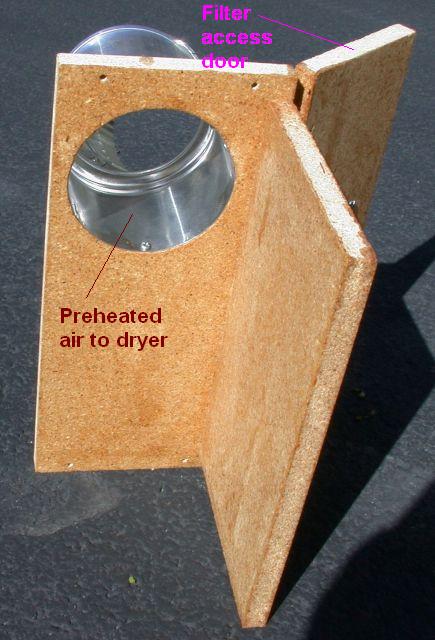 The access door to the filter for hot moist air from the driver is attached with two hinges.
The access door to the filter for hot moist air from the driver is attached with two hinges.
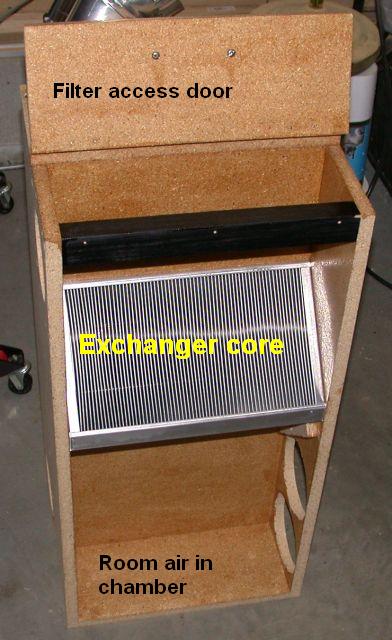 The heat exchanger core is a German made Klingenburg model PWT-200 Plate-type air to air heat recovery module.
The heat exchanger core is a German made Klingenburg model PWT-200 Plate-type air to air heat recovery module.
Also, try this link: Contact Klingenburg USA
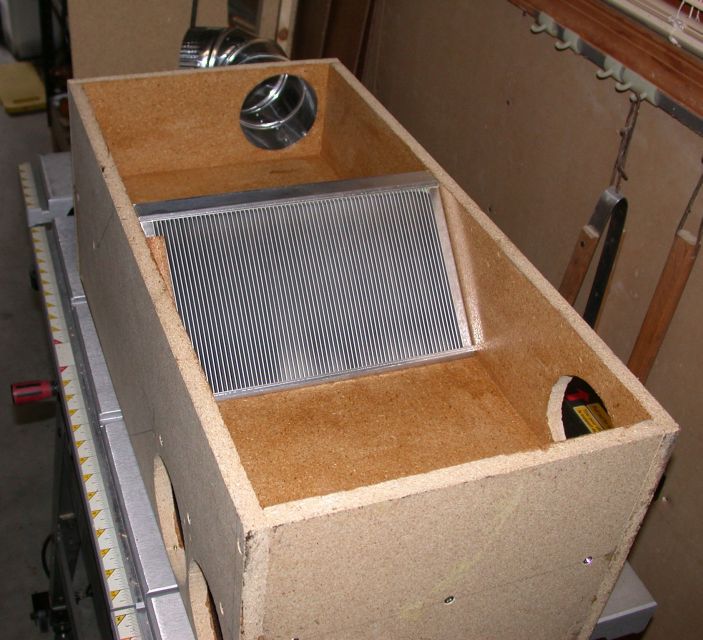 The plates are divided such that air moving diagonally in one direction is completely isolated from air moving diagonally the other way. Only the heat is transferred.
The plates are divided such that air moving diagonally in one direction is completely isolated from air moving diagonally the other way. Only the heat is transferred.
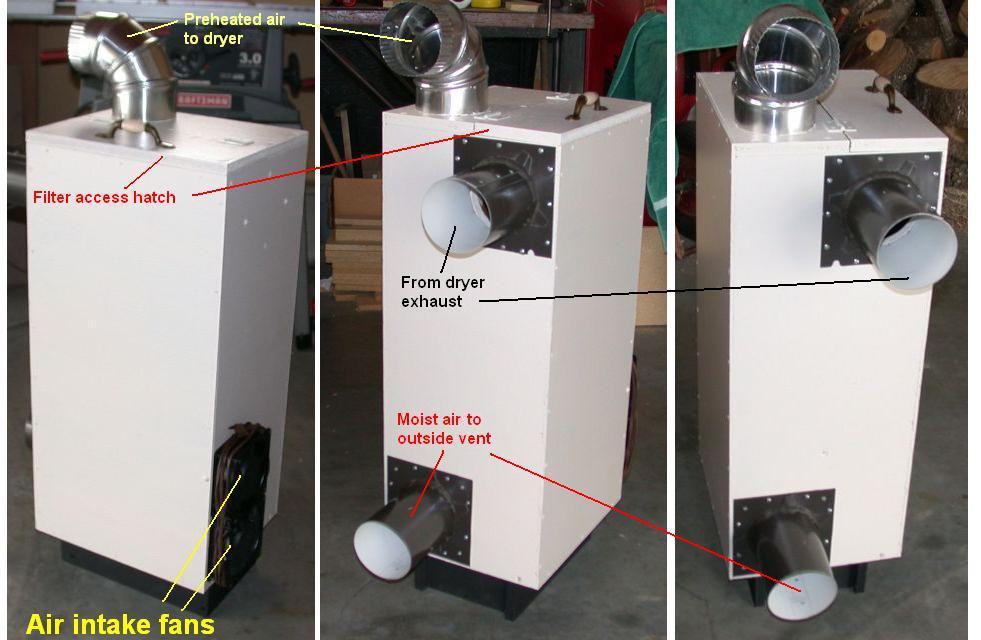
The two flanges on the back that accept the 4 inch ducts where made by a local sheet metal shop. The flange on top is a standard dryer 90 degree elbow.
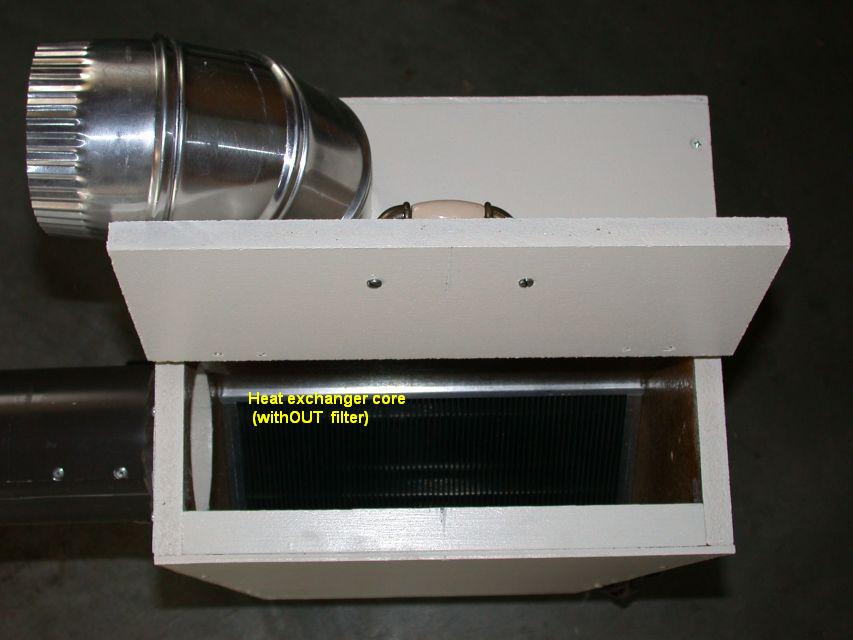 The filter has been removed to see the exchanger core.
The filter has been removed to see the exchanger core.
The filter is a cut down "Poly-fil" NU-FOAM chair cushion from Wall-Mart. It comes in a square sheet 15 X 17 X 2 Inch thick. It's washable and seems to hold up to the heat. It seems to be made in thin layers and was easily "pealed" down to about 1/2 inch thick. It is dense enough to stop the very fine particles of dust that get through the dryer filter yet offers very little resistance to the air flow.

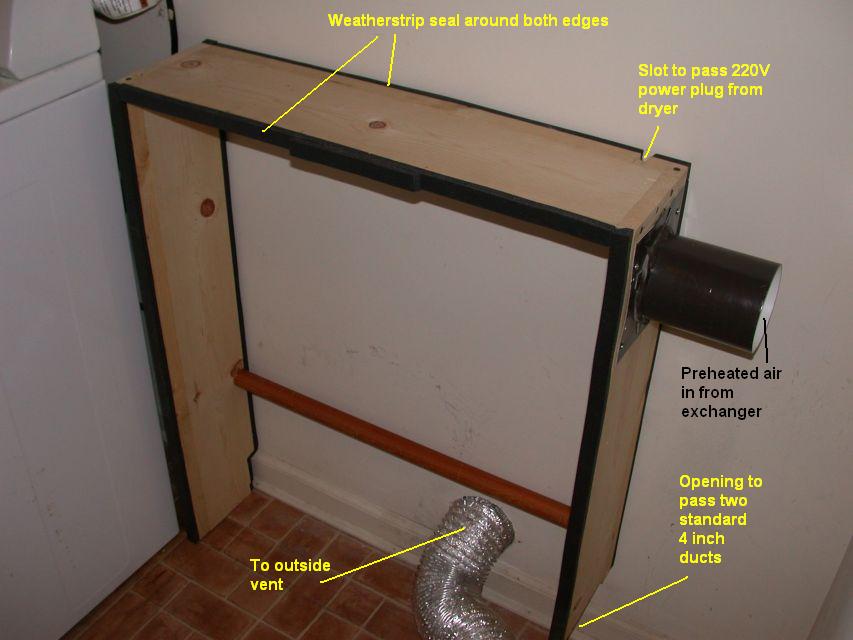 The air box accepts preheated air from the top of the exchanger and restricts it to the area behind the driver. The dryer simply shoves against it holding it to the wall. No modifications are required to the dryer at all.
The air box accepts preheated air from the top of the exchanger and restricts it to the area behind the driver. The dryer simply shoves against it holding it to the wall. No modifications are required to the dryer at all.
The upper right edge of the box is fastened to the dry-wall with a small bracket.
The area below the air box is open to allow the dryer to draw as much air as it needs beyond that provided by the exchanger. I consider this a safety factor.

The power to run the intake fans is taken from the timer motor inside the dryer. The fans run any time the timer is working. Rotary fans were used because I had them. I believe a squirl-cage fan would be better.
Connections are made using push-on terminals which allows the dryer to be quickly restored to factory condition in minutes.
Only after finishing the entire thing did I realize the fans could have been controlled by a simple normally-open thermostat located inside the filter compartment requiring no connections to the dryer at all! Ah, 20-20 hind-sight!

The final installation with the dryer in position shoved tightly against the air box. Note that the white duct carrying preheated air to the air box should not be used on the dryer output or from the exchanger to the outside vent. I was told the white duct hose is now illegal.
performance is quite good. Access holes for a digital thermometer in the top two compartments show air from the dryer between 110 to 130 F degrees on "medium" heat setting while the preheated air back to the air box measures 112 to 122 degrees F. Another test run with a small load of towels on "high" heat measured 113 to 120 Deg. F to the air box and 123 to 148 Deg. F from the dryer.
Here's a published paper on clothes dryer efficiency that has some very relevant information Here